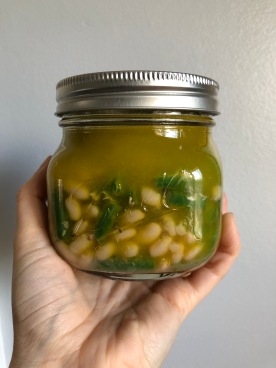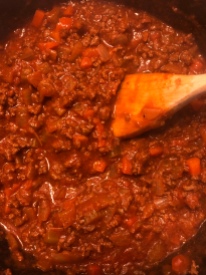So I have 25 pounds of peaches.
Yes, I have 25 pounds of peaches on purpose because of a company called The Peach Truck and a friend who had a very good but very chaotic idea. The Peach Truck tours the country delivering 25-pound boxes of perfectly in-season Georgia peaches to eager customers. I’m not exaggerating about the eagerness, people were stoked about this fruit! My friend Jen saw the locations near us, texted me about it, and I promptly responded, excited to get the chance to have so much fresh, bake-able fruit in my possession. So I showed up to a near-abandoned mall in the city where I live to pick up 3 boxes of peaches (one for me, one for Jen, and one for Jen’s mom) with few calculated plans for all 25 pounds that I would haul home and try to store in my humble apartment.
Mere days before as I received email and text reminders about my impending acquisition, I panicked a little bit and decided “okay, I have all these cookbooks and one of them has to have a recipe that isn’t your average peach cobbler or peach pie.” So with sticky notes in hand, I scoured my cookbooks, knowing that so few would have peach recipes but at least one might have some winners. Lo and behold, the Joy of Cooking answered my prayers. I bookmarked something called the Peach Cake Cockaigne and decided that that would be my first adventure with these peaches.
Now, when you look up the word “cockaigne” you don’t get pictures of cakes, desserts, or pastries. You get a definition:
Cockaigne, noun
an imaginary land of great luxury and ease
Merriam-Webster Dictionary
Cool, and entirely unhelpful! Bucolic and idyllic, but what does this mean dessert-wise? With a little more digging I learned that this is a Joy of Cooking original recipe, unique to this book. In the Joy of Cooking’s foreword, the authors explain:
“‘Cockaigne,’ which in medieval times signified ‘a mythical land of peace and plenty’ and which we chose as the name for our country home.”
Irma S. Rombauer and Marion Rombauer Becker
This personal touch is endearing, and quite frankly I’m now jealous of this fabled and beloved country home, clearly abundant, wholesome, and relaxing. However, it does not explain the dessert that I was about to make. So surprise ensued as I baked this dessert with no understanding of the finished product…
This was one of the most delightful desserts that I have baked in a long time. As it turns out, a cake cockaigne is like an upside down shortcake: where instead of a biscuit-like topping over syrupy fruits, the biscuit dough is beneath layers of jammy fruit slices and streusel-like topping. There’s no doubt the quality of these super-ripe peaches and a fresh tin of cinnamon elevated this simple dish. The dough rises slightly to become a spongey cake that then absorbs the juices from the peach slices arranged on top. A fresh warm slice certainly feels like being in a lakeside country home. However, eating a slice one day later when the cake becomes nearly saturated with peach juice feels decadent. A warm slice beckons a scoop of vanilla ice cream; a chilled, leftover slice would be almost incomplete without a cup of black coffee.
Apple, Peach or Plum Cockaigne
For the cake:
1 cup all-purpose flour
1 teaspoon baking powder
1/2 teaspoon salt
2 tablespoons sugar
3 tablespoons butter (chilled and cubed)
1 egg
1/2 teaspoon vanilla
1/2 cup milk
4 cups sliced apples, peaches, or plums
For the topping:
1 cup brown sugar
2 teaspoons cinnamon
3 tablespoons butter (melted)
- Preheat oven to 425 degrees.
- In a medium bowl, sift together flour, baking powder, salt and sugar.
- Add cubed chilled butter to dry ingredients. Cut butter into small, pea-sized pieces with a pastry cutter or fork.
- In a measuring cup, combine the egg, vanilla, and enough milk to make a 1/2 cup mixture. Beat until homogenous.
- Add the wet ingredients into the bowl with dry ingredients. With a rubber spatula, combine until no dry streaks remain. Batter should be thick.
- Spread the batter into a 9- or 10-inch baking dish or cake pan.
- Layer the fruit on top of the batter. I like to line up the peach slices in rows, overlapping so all the fruit fits.
- Prepare the topping: Combine melted butter, brown sugar, and cinnamon in a small bowl.
- Sprinkle sugar mixture evenly over the fruits.
- Place in preheated oven and bake for 25 minutes.


























